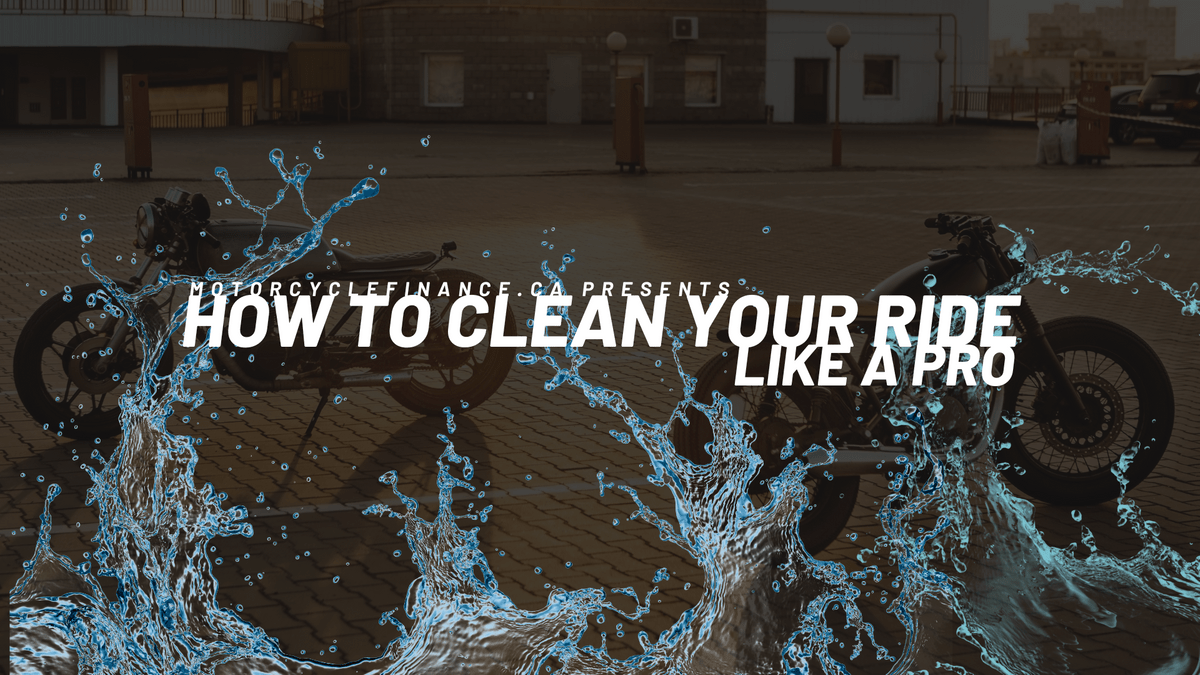As the frigid winds of winter approach, every Canadian rider knows the bittersweet feeling of putting their beloved bike into hibernation for the season. Before you tuck your two-wheeled companion away for the winter, you might find yourself reminiscing about one last exhilarating ride through the crisp autumn air. I have made it a tradition to go for one last ride before the snow flies to commemorate the great times I had over the riding season and give it a proper send-off. In this step-by-step guide to winterizing your motorcycle, we'll take you through our process of ensuring our ride remains in peak condition when spring finally arrives.

Choose a Secure Winter Storage Option
Before diving into the technical aspects of winterizing, your first step is to choose a secure storage option. Whether it's a garage, shed, a dealership's storage service, or a dedicated storage facility, your choice will greatly impact your bike's condition come spring. A sheltered storage space offers protection from the elements and potential theft.
Winter Battery Maintenance
Proper battery maintenance is crucial during winter. Use a trickle charger to keep your battery charged all season. If it's more accessible, consider removing the battery and storing it in a warm, dry place. A well-maintained battery ensures your bike will start up without a hitch when it's time to ride again.
Motorcycle Fuel System Care
Take care of your bike's fuel system to prevent issues over the winter. Fill your tank to the brim, as modern fuel injection systems are prone to rusting if left exposed to air. Add a motorcycle fuel stabilizer to prevent gas spoilage. After adding stabilizer, run the bike to ensure the treated fuel circulates. For older carbureted bikes, consider disconnecting the carburetor and draining the gas to prevent varnishing.
Change Your Oil
Unless your oil is relatively new, changing it before winter is a smart move. Used oil can become acidic, potentially causing corrosion. This step ensures that all the engine's internal components are protected. Although some opt for an oil change before the first spring ride, it's usually not necessary if you've done it before winter storage. If you want to be ready to rock for the springtime, you may want to get a full service and inspection done by a reputable motorcycle repair shop.

Block Out Critter Targets
Prevent critters from making a mess of your bike over the winter by blocking potential entry points. Plug the exhaust pipes and airbox with rags or plastic bags secured with elastic bands. Critters love finding warm, cozy spots, and your motorcycle could be an inviting target.
Proper Motorcycle Tire Care
To prevent dry rot, maintain your tires over the winter. Keep them clean and inflated to the recommended pressure. If possible, elevate your bike using a center stand, bike jack, or paddock stand to avoid long-term tire compression. If elevation isn't an option, periodically move the bike to ensure the tires don't sit in the same spot for months.
Clean Your Motorcycle
Thoroughly cleaning your motorcycle is often underestimated but is crucial for its well-being. Dirt, mud, and bugs left on your bike can corrode the finish over time. Treat painted parts with wax and plastic components with silicone to keep them protected. If your motorcycle has a chain drive, lubricate it generously to prevent rust.
Choose a Proper Motorcycle Cover
Whenever possible, cover your motorcycle with a synthetic cover. These covers are affordable and easily accessible. Investing in one will help protect your bike from the elements, dust, and debris. If outdoor motorcycle storage is your only option, invest in a heavy-duty waterproof cover for maximum protection.

Motorcycle Winterization Checklist
- Choose a secure storage option (garage, shed, dealer, or storage facility).
- Maintain your battery (use a trickle charger and store the battery in a warm, dry place).
- Take care of the fuel system (fill the tank, add a fuel stabilizer, and run the bike).
- Change the oil (unless it's nearly new).
- Block potential critter entry points (exhaust pipes and airbox).
- Maintain your tires (keep them inflated and elevate the bike if possible).
- Clean your bike thoroughly (remove dirt, bugs, and mud; treat painted parts and plastics).
- Cover your motorcycle (use a synthetic cover for protection).
With winter's chill fast approaching, preparing your motorcycle for the season is a responsibility every Canadian rider takes seriously. By following this comprehensive guide, you'll ensure your bike stays in prime condition throughout its winter slumber. From choosing the right storage option to tire care, battery maintenance, and everything in between, these steps will help you embrace the coming spring with a perfectly preserved, ready-to-ride motorcycle.

